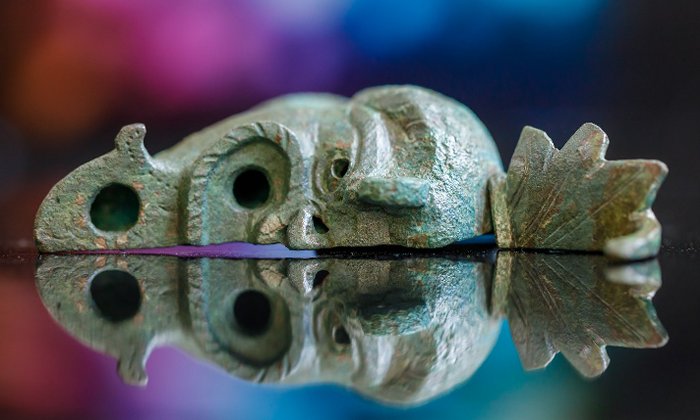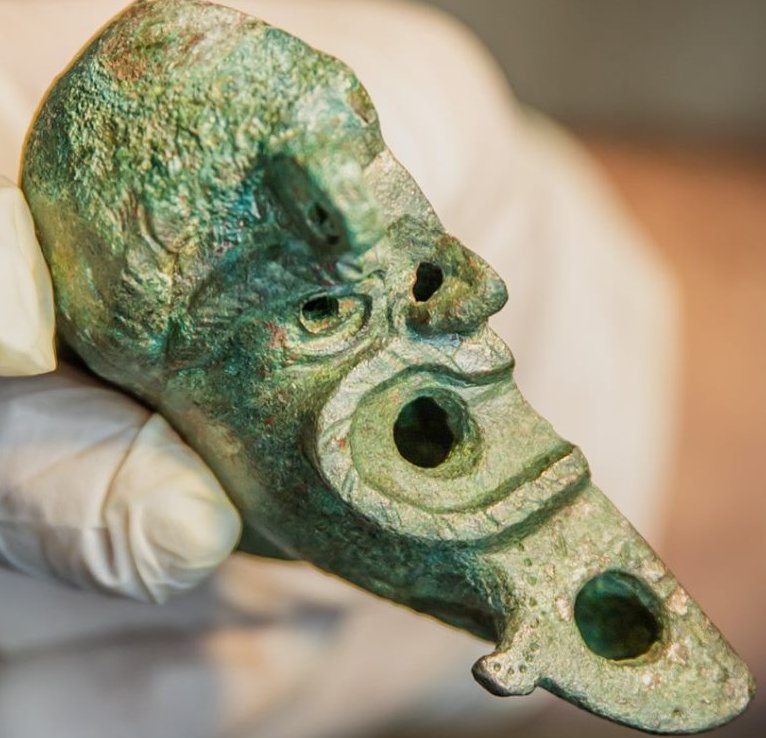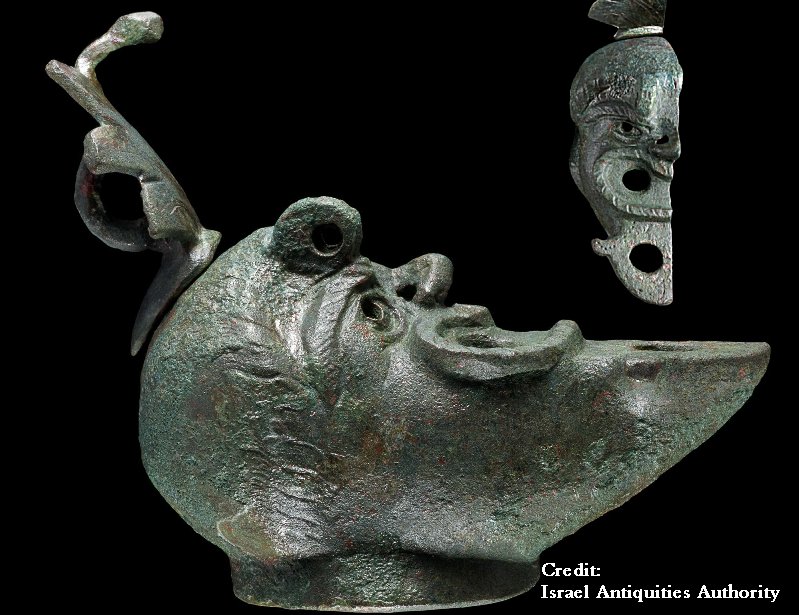Conny Waters – AncientPages.com – A rare bronze oil lamp, shaped like a grotesque face that is cut in half, was recently unearthed during excavations conducted in the City of David National Park.
This special bronze lamp was deliberately buried in the foundations of the building, dating to the Roman Period, subsequent to the destruction of Jerusalem and the Second Temple in 70 CE (late 1st-early 2nd century CE).

Rare bronze oil lamp with a face cut in half unearthed in Israel. Credit: Koby Harati, City of David; Eliyahu Yanai, City of David; Dafna Gazit, Israel Antiquities Authority
According to archaeologists excavating at the site, the lamp was a foundation deposit (a ritual burial of an offering in the foundations of a building). “Foundation deposits (offerings) were prevalent in the ancient world.
It was poured into a sculpted mold that was shaped like half of a face of a bearded man with a grotesque appearance. The tip of the lamp is shaped like a crescent moon, and the handle is shaped like the Acanthus plant. The decoration that appears on the lamp is reminiscent of a common Roman artistic motif, similar to a theatrical mask.
It is possible that the importance of the building, and the need to bless its activity with luck by burying a foundation deposit, was due to its proximity to the Siloam Pool, which was also used in the Roman period as the central source of water within the city.
The uniqueness of the current object is that it is only half a face >> researchers are debating what this means. It may have been simply a practical matter. The lamp may have been attached to a flat object or wall, serving as a wall lamp, but the possibility that it was an object used in some sort of ceremonial ritual should not be ruled out.
 Rare bronze oil lamp with a face cut in half unearthed in Israel. Credit: Koby Harati, City of David; Eliyahu Yanai, City of David; Dafna Gazit, Israel Antiquities Authority
Rare bronze oil lamp with a face cut in half unearthed in Israel. Credit: Koby Harati, City of David; Eliyahu Yanai, City of David; Dafna Gazit, Israel Antiquities Authority
After the bronze lamp was found, it was handed over for treatment and preservation in the metal laboratory of the Israel Antiquities Authority and put in the care of Ilia Reznitsky.
During the treatment, another exciting discovery was made – inside the lamp was its wick, which was unusually preserved. The wick, which is a very rare find, was submitted for examination by Dr. Naama Sukenik, curator of organic materials at the Israel Antiquities Authority.

Credit: Israel Antiquities Authority
Upon microscopic examination, Dr. Sukenik identified that it was a wick made of flax. Future stages of research will try and identify any oil residue left on the wick, which will help determine whether the lamp was used, and if so, what oil they used to light it.
It is interesting to know that decorated bronze oil lamps were discovered throughout the Roman Empire.
See also: More Archaeology News
For the most part, such oil lamps stood on stylish candelabras or were hung on a chain. Collections around the world contain thousands of these bronze lamps, many of which were made in intricate shapes, indicating the artistic freedom that Roman metal artists possessed.
Meanwhile, this half of a lamp, and in fact half a face, which was discovered in the City of David, is a very rare object, with only a few discovered in the whole world, and is the first of its kind to be discovered in Jerusalem.
![]()
Article in Spanish – here
![]()
Article in Portuguese – here
Written by Conny Waters – AncientPages.com Staff Writer





